- Nvidia Unveils RTX 5000 Series with DLSS 4 and Groundbreaking AI Features
- Conclusion: The Future of Gaming with Nvidia’s RTX 5000 Series
Nvidia Unveils RTX 5000 Series with DLSS 4 and Groundbreaking AI Features
Yesterday at CES in Las Vegas, Nvidia officially revealed their highly anticipated RTX 5000 series graphics cards, designed to redefine gaming performance and AI-driven technologies. Launching with the enthusiast-focused RTX 5090, RTX 5080, and RTX 5070 variants, this new lineup introduces groundbreaking features like DLSS 4 and RTX Neural Shaders, pushing the limits of graphical fidelity and efficiency.
RTX 5090: The Ultimate Flagship for 8K Enthusiasts
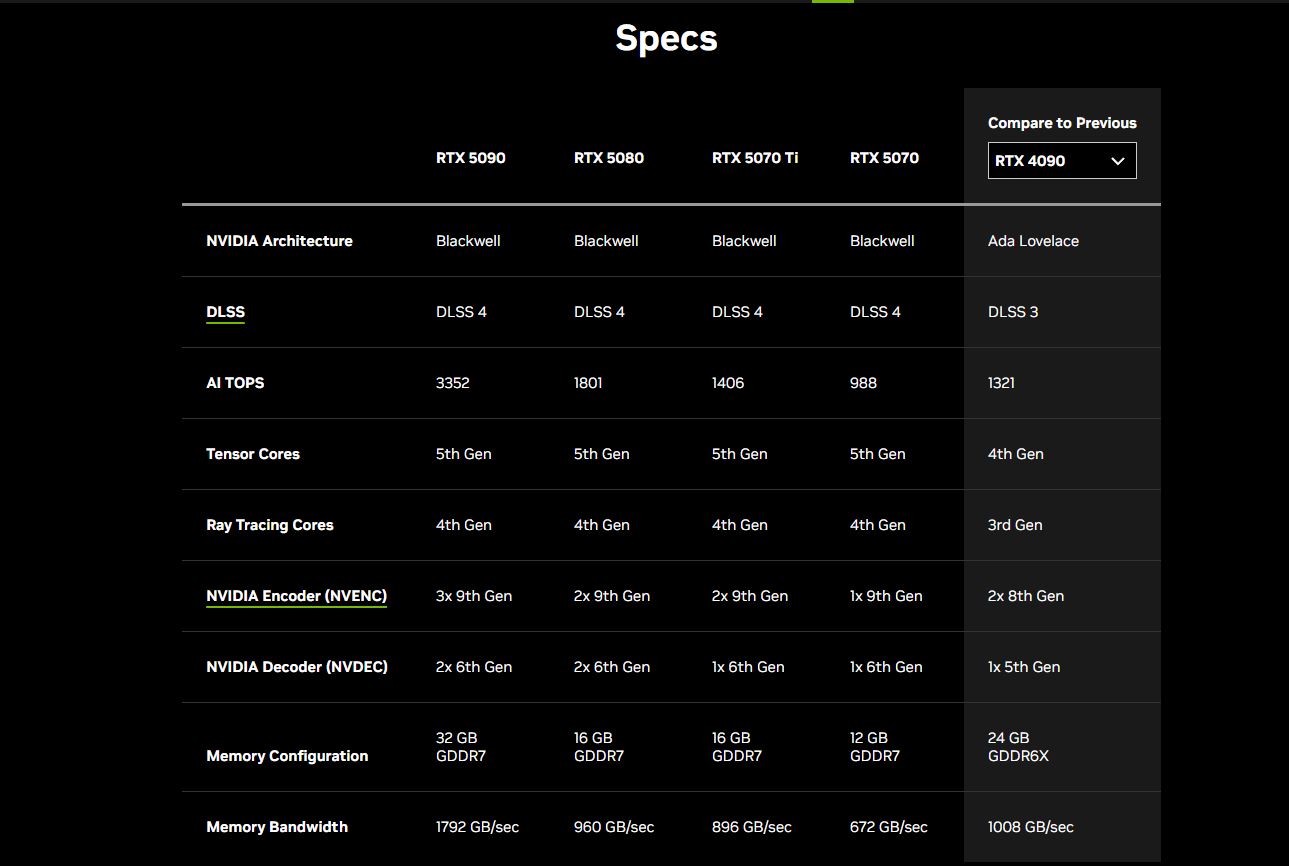
The RTX 5090 is Nvidia’s most powerful offering to date, designed for gamers and creators looking to push into the realm of 8K gaming. With a staggering MSRP of $1,999, this flagship GPU boasts:
- VRAM: 32GB of GDDR7.
- Memory Bus: 512-bit.
- Memory Bandwidth: 1,792 GB/s.
- Memory Speed: 23.8 Gbps.
- Interface: PCI-e 5.0 x16.
- Power Requirement: 1000W total system power.
While 8K gaming is still in its infancy due to limited software and display support, the 5090 is a future-proof choice for enthusiasts willing to invest in cutting-edge hardware.
RTX 5080: A Premium Offering at a Familiar Price
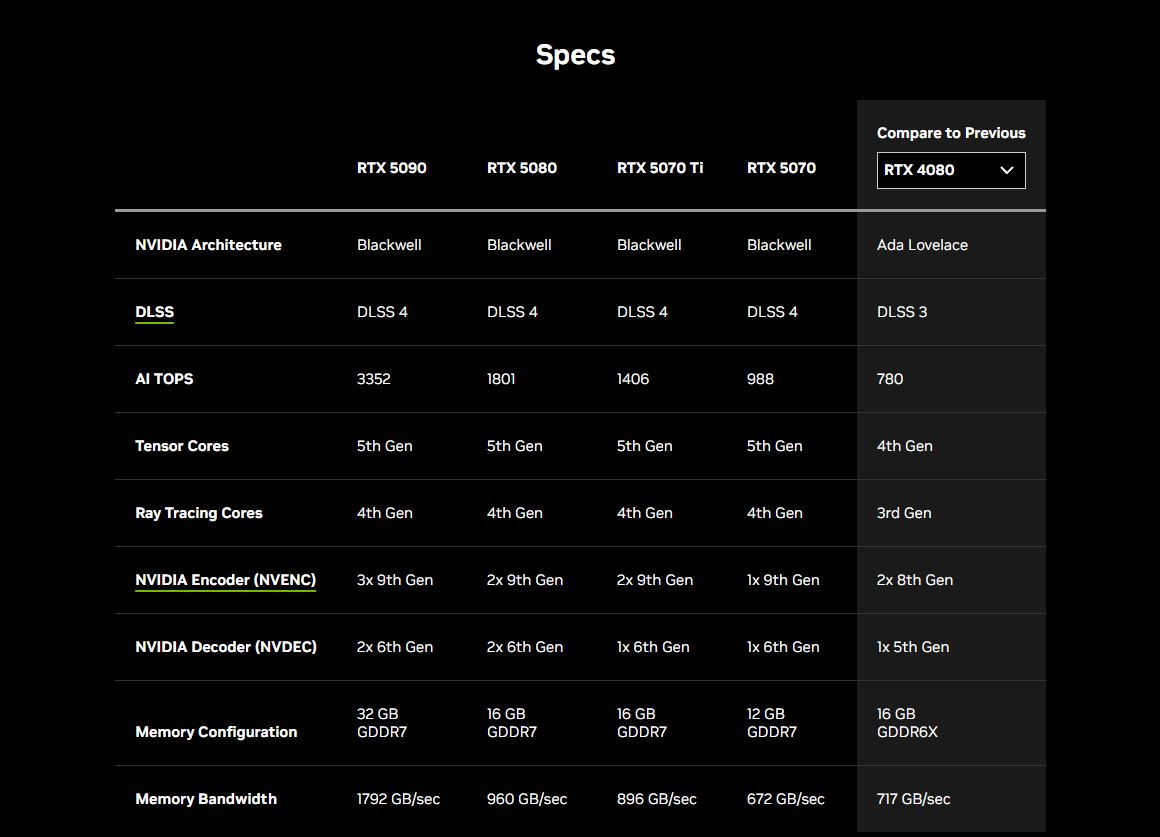
For those seeking high performance without breaking the bank, the RTX 5080 strikes a balance at $999, matching the launch price of the RTX 4080. Key specs include:
- VRAM: 16GB of GDDR7.
- Memory Bus: 256-bit.
- Memory Bandwidth: 960 GB/s.
- Memory Speed: 30 Gbps.
- Power Requirement: 850W total system power.
Available starting January 21, the RTX 5080 offers significant improvements over its predecessor while maintaining accessibility for high-end gamers.
RTX 5070 and 5070 Ti: Affordable Performance for the Midrange Market
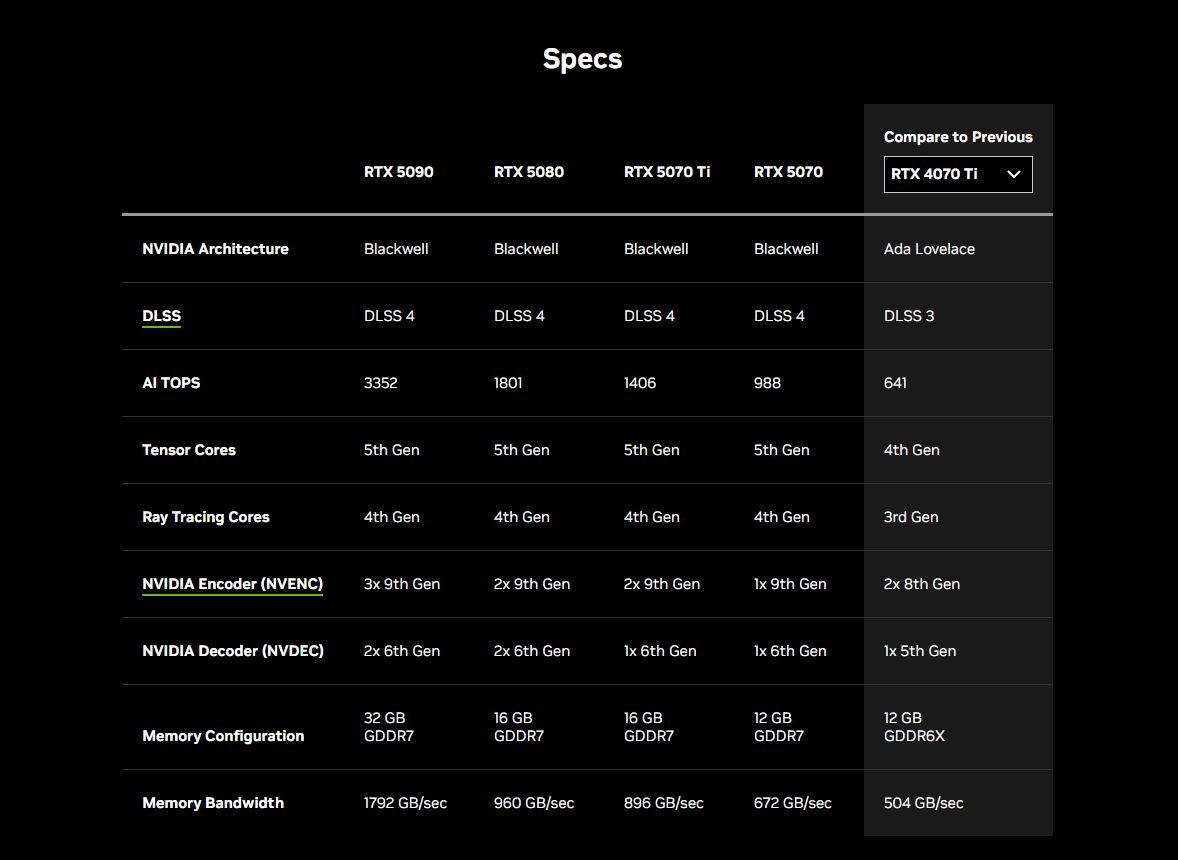
Catering to midrange users, Nvidia unveiled two variants in the RTX 5070 family. The RTX 5070 Ti provides impressive specs for $749, including:
- VRAM: 16GB of GDDR7.
- Memory Bus: 256-bit.
- Memory Bandwidth: 896 GB/s.
- Memory Speed: 28 Gbps.
- Power Requirement: 750W total system power.
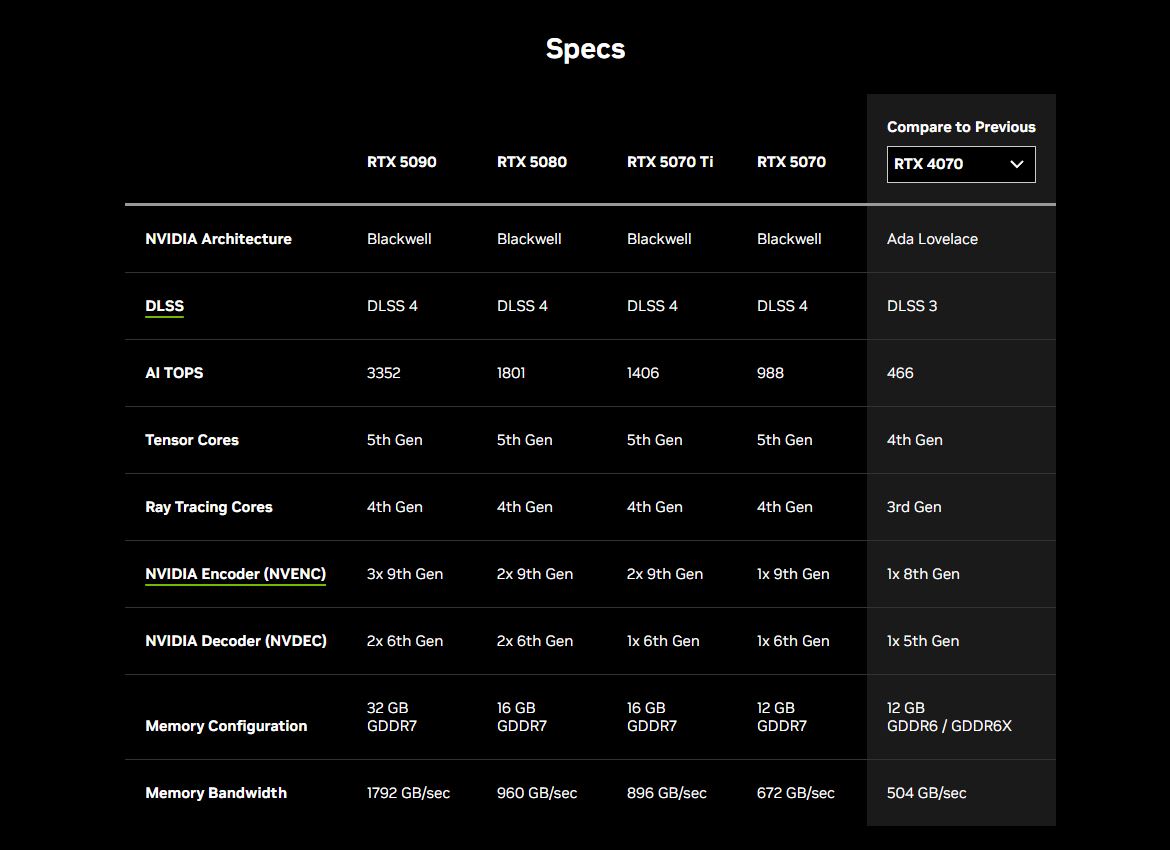
For budget-conscious gamers, the RTX 5070 promises 4090-level performance at just $549, undercutting the launch price of the RTX 4070. The 5070 features:
- VRAM: 12GB of GDDR7.
- Memory Bandwidth: 672 GB/s.
- Memory Bus: 256-bit.
- Power Requirement: 650W total system power.
Both midrange GPUs will hit shelves in February, broadening Nvidia’s reach across various price points.
Innovations in AI: DLSS 4 and More
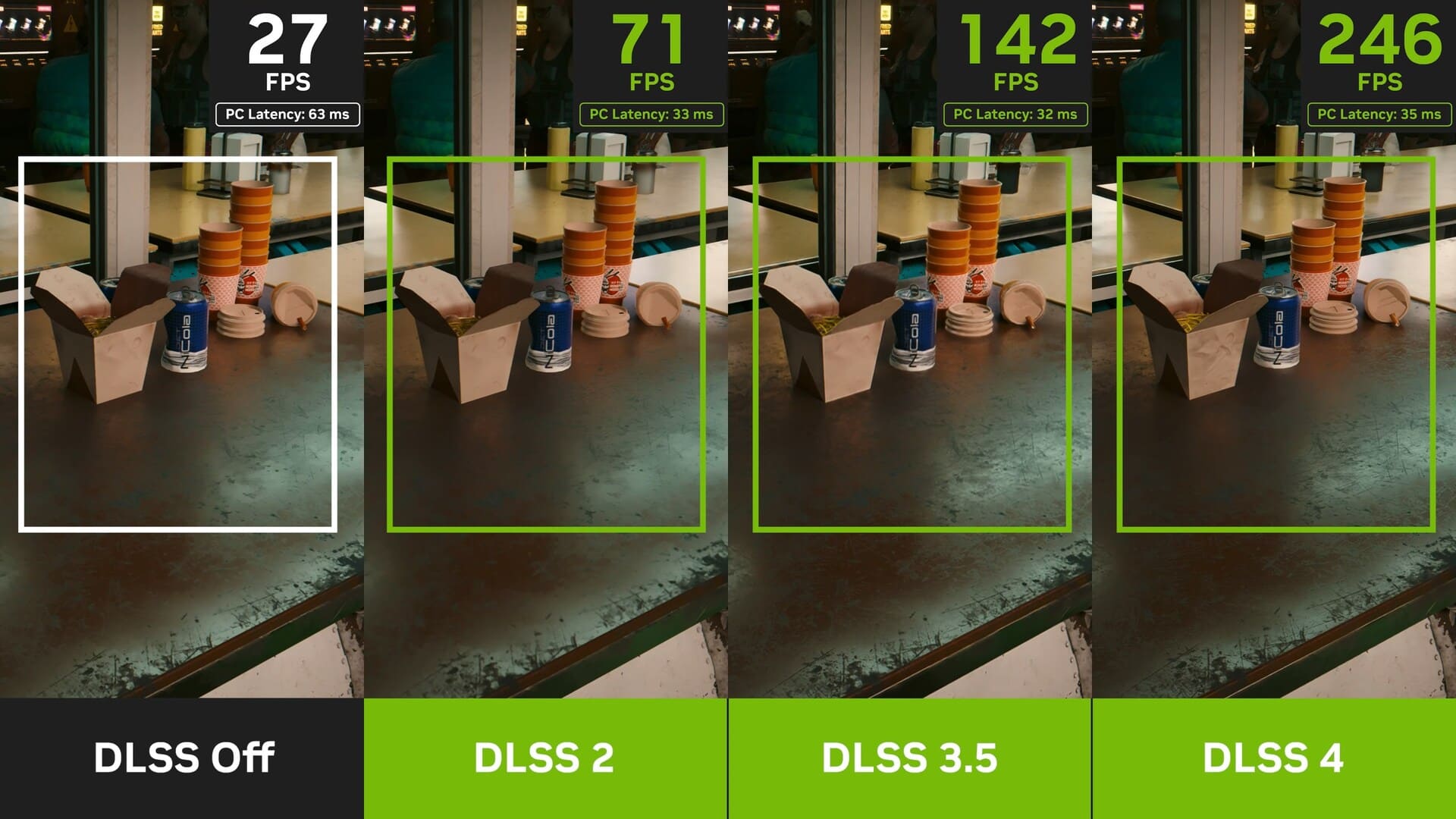
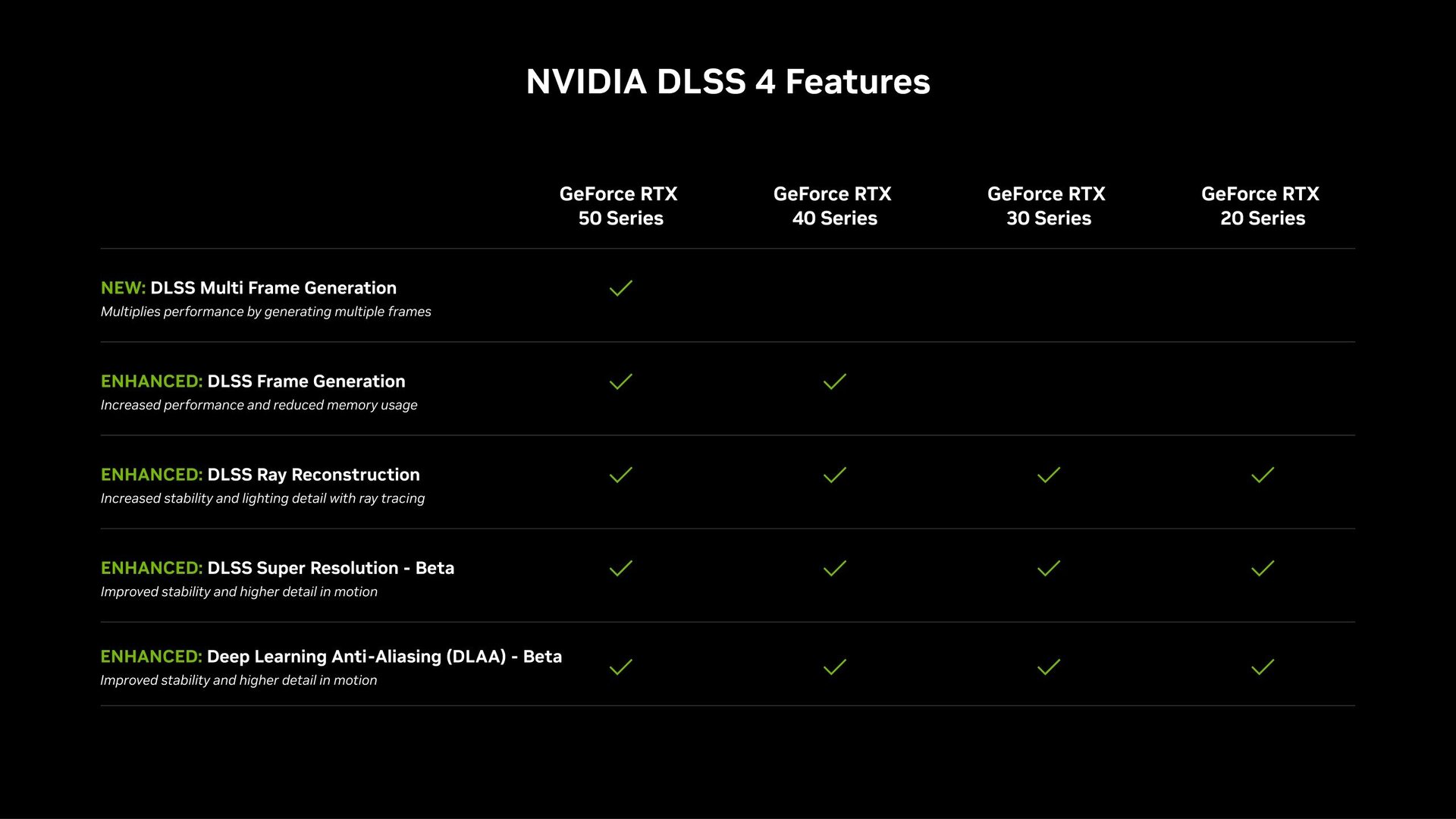
A major highlight of the RTX 5000 series is the introduction of DLSS 4, Nvidia’s latest breakthrough in neural rendering technologies. According to Nvidia:
“DLSS is a revolutionary suite of neural rendering technologies that uses AI to boost FPS, reduce latency, and improve image quality. ?The latest breakthrough, DLSS 4, brings new Multi Frame Generation and enhanced Ray Reconstruction and Super Resolution, powered by GeForce RTX™ 50 Series GPUs and fifth-generation Tensor Cores. DLSS on GeForce RTX is the best way to play, backed by an NVIDIA AI supercomputer in the cloud constantly improving your PC’s gaming capabilities.”
While DLSS 4 upscaling will be available on older RTX cards, exclusive features like Multi Frame Generation will be limited to the RTX 5000 series. Nvidia is also debuting Reflex 2, which reduces input latency by up to 75% through new Frame Warp technology.
Adding to this are RTX Neural Shaders, leveraging AI for realistic shading, lighting, and character rendering. Innovations like Neural Faces, enhanced hair and skin rendering, and film-quality visuals aim to elevate realism in games to an unprecedented level.
Conclusion: The Future of Gaming with Nvidia’s RTX 5000 Series
Nvidia’s RTX 5000 series brings groundbreaking features like DLSS 4, Reflex 2, and RTX Neural Shaders, offering top-tier performance for 8K gaming and beyond. With the RTX 5090, 5080, and 5070 series, Nvidia provides powerful options for gamers across all budgets.
However, if you’re looking for alternatives or more affordable options, AMD’s new GPUs announced at CES 2025 may be worth exploring. Stay tuned for our coverage on AMD’s latest graphics cards and see how they compare to Nvidia’s offerings.



Leave a Reply